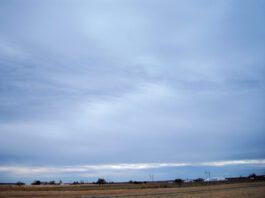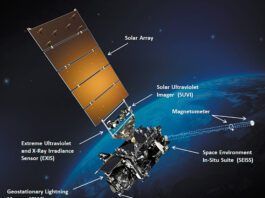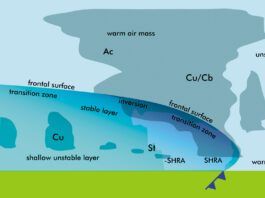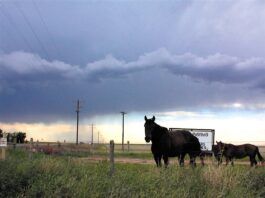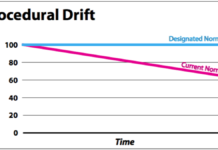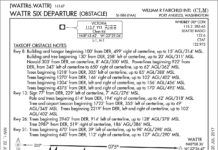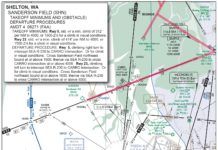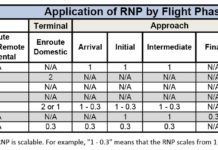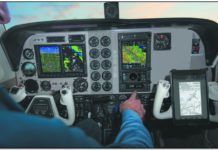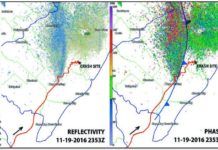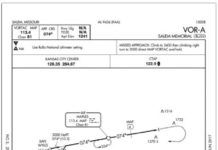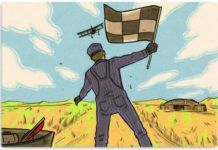Why We Make Mistakes
Our coverage of the FAAs Compliance Philosophy (April 2016 and April 2017 and in this issue) begs the question of how generally well-intentioned and experienced pilots fall out of compliance in the first place. A little research shows that falling onto the dark side can be slow and insidious with undesired side effects, eventually capable of triggering an incident or accident. …
It Looks Like Itll Work
My guardian angel has a perverse sense of humor. I cant count the number of times Ive done the wrong thing for the right reasons and had it turn out better than if I had seen it clearly from the start.
Painting the Weather
The end of summer is near, which means a gradual decrease in thunderstorm activity in the northern hemisphere. But with the return of autumn, we will regularly see the jet stream over the United States. This means more opportunities for precipitation to organize into severe storms. Its a good time to get up close with radar again and pick up on some things you might have missed in previous training.
On The Air: September 2017
A few years after the big red Do Not Enter circle was drawn over Washington, DC, I needed to attend a meeting in Silver Spring, Maryland. In spite of advice against it, I decided to fly my 182 into College Park Airport (KCGS), which would, of course, take me directly into the forbidden zones around DC (ADIZ and Flight Restricted Zone). A couple days before departing my southern Illinois home I called ATC and got the detailed entry instructions.
Type Clubs are Good
Assuming you own an airplane or fly the same one all the time, consider joining the type club supporting that aircraft. Okay, thats your takeaway. Let me explain why I recommend that. Ive owned three airplanes. My first was a mighty Cessna 150 and I was too young and too ignorant for aircraft ownership, so that one doesnt count. Next was a Mooney, a 1968 M20F Executive. Older and wiser then, I had previously joined the…
On The Air: August 2017
I was flying with a particularly weak student doing off-airport operations. We were combining high-altitude ops with a pinnacle approach to Pleasants Peak, at 4007 MSL. I wanted this student to call SoCal Approach for a brief bit of flight following to the mountain. I told my student exactly what to say to SoCal. SoCal Approach, this is helicopter 8490D, 5 south of Pleasants Peak for flight following at 4000 feet.
Points in Space
The first GPS I used in the air was a Garmin 95 portable. Brick-shaped and nearly brick-sized, its etch-a-sketch screen was a still a revelation. We could go direct to airway fixes and watch the little black pixels approach just as the CDI needles swung to center. This was back when we taught instrument students how to eyeball a course direct to a fix defined by two VOR radials.
RNAV Versus RNP
Shakespeare elegantly downplays the importance of naming in Romeo and Juliet, writing: Whats in a name? That which we call a rose by any other name would smell as sweet. What matters is the subject and not what the subject is called. But this is an over-simplification because changing the subject would make the quote non-sense: That which we call a fish by any other name would smell as sweet. Words have meaning.
TAA Ruin Your Scan
Situational awareness is critical when youre on the gauges, right? Few of us will argue that with a good EFIS its childs play to maintain that situational awareness, regardless of the quality of your scan. So far, so good.
Misfortune of Others
While some readers probably welcome a refresher on turbulence, shear, and thunderstorm dangers, others might see it as beating a dead horse. But Wx Smarts is that intersection between my 30 years of forecasting and your thousands of hours of instrument time. Within these articles I guarantee theres always something that wasnt fully covered in flight school or the FAA circulars. Whether its more detail or just an unusual situation, the goal is to keep you interested, thinking outside the box, and having more insight into aviation meteorology than the average pilot.
Which Way to Turn?
You are flying the VOR-A approach into Salem Memorial (K33) in your Cessna 182. The airport has no tower, with Class E airspace starting at 700 feet AGL. The winds favor Runway 17. You dive n drive after the DME stepdown and break out at 680 feet AGL with the runway in sight two miles ahead. Do you (a) cross midfield and make left downwind to 17, or (b) turn right to the upwind leg for Runway 17 and make left traffic from there, or (c) turn left before reaching the airport and make right traffic for 17.
ATC History
Which came first: the chicken or the Federal Egg Administration? Impossible to say. Physics teaches us that when Bernoulli found lift, his nemesis, Newton, said there must be an opposing reaction. So, when the Wright brothers flew, government pondered how to keep them from impacting all those other aeronauts. Little happened because of Newtons Law of Administrative Inertia: An agency at rest remains at rest until acted upon by an un-ignorable force. …


